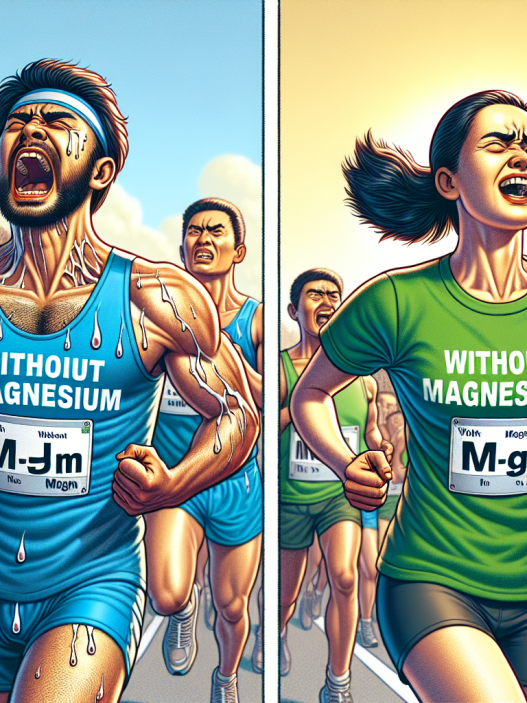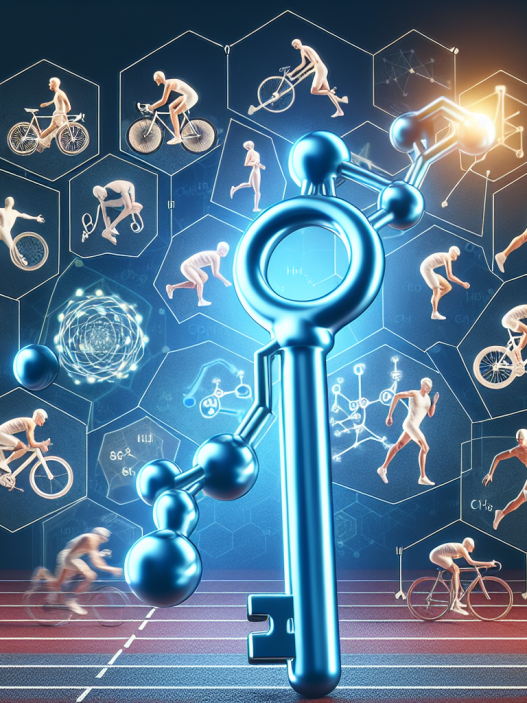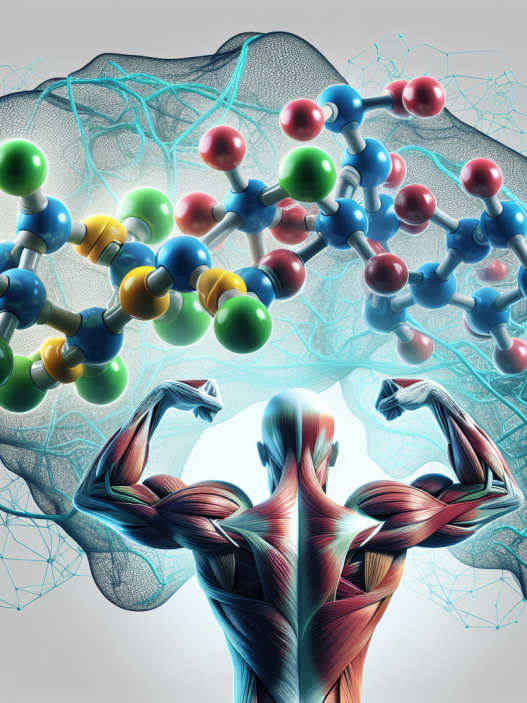-
Table of Contents
- Enhancing Athletic Performance through Magnesium Integration
- The Role of Magnesium in Athletic Performance
- The Impact of Magnesium Deficiency on Athletic Performance
- The Benefits of Magnesium Integration for Athletes
- How to Integrate Magnesium into an Athlete’s Routine
- Expert Opinion
- Conclusion
- References
Enhancing Athletic Performance through Magnesium Integration
Athletes are constantly seeking ways to improve their performance and gain a competitive edge. From specialized training programs to strict diets, athletes are willing to go to great lengths to achieve their goals. However, one often overlooked factor in athletic performance is the integration of magnesium into an athlete’s routine. Magnesium, a vital mineral in the body, plays a crucial role in various physiological processes that are essential for athletic performance. In this article, we will explore the benefits of magnesium integration for athletes and the scientific evidence supporting its use.
The Role of Magnesium in Athletic Performance
Magnesium is a mineral that is involved in over 300 biochemical reactions in the body, including energy production, muscle contraction, and protein synthesis (Volpe, 2015). These processes are crucial for athletic performance, making magnesium an essential nutrient for athletes. In fact, magnesium deficiency has been linked to decreased athletic performance, fatigue, and muscle cramps (Nielsen & Lukaski, 2006).
One of the key roles of magnesium in athletic performance is its involvement in energy production. Magnesium is a cofactor for the enzyme ATP synthase, which is responsible for producing ATP, the primary source of energy for muscle contractions (Volpe, 2015). Without adequate levels of magnesium, the body may struggle to produce enough ATP, leading to decreased energy and performance.
Magnesium also plays a crucial role in muscle contraction. It helps regulate the levels of calcium and potassium in muscle cells, which are essential for proper muscle function (Nielsen & Lukaski, 2006). Additionally, magnesium has been shown to reduce muscle cramps and soreness, allowing athletes to train harder and recover faster (Volpe, 2015).
The Impact of Magnesium Deficiency on Athletic Performance
Despite the importance of magnesium in athletic performance, many athletes are deficient in this mineral. This is due to several factors, including inadequate dietary intake, increased magnesium excretion through sweat, and increased magnesium requirements during intense training (Nielsen & Lukaski, 2006).
A study conducted on elite athletes found that 68% of them had low magnesium levels, and 19% were severely deficient (Nielsen & Lukaski, 2006). This deficiency can have a significant impact on athletic performance, as it can lead to decreased energy, muscle cramps, and impaired recovery (Volpe, 2015).
Furthermore, magnesium deficiency has been linked to an increased risk of injuries in athletes. A study on female collegiate athletes found that those with low magnesium levels were more likely to experience stress fractures and other injuries (Volpe, 2015). This highlights the importance of maintaining adequate magnesium levels for injury prevention and overall athletic performance.
The Benefits of Magnesium Integration for Athletes
Integrating magnesium into an athlete’s routine can have numerous benefits for their performance and overall health. One of the most significant benefits is improved energy production. As mentioned earlier, magnesium is essential for ATP production, which is crucial for high-intensity exercise (Volpe, 2015). By ensuring adequate magnesium levels, athletes can maintain their energy levels and perform at their best.
Magnesium integration can also help reduce muscle cramps and soreness, allowing athletes to train harder and recover faster. This is especially beneficial for endurance athletes who put their bodies through prolonged and intense training sessions (Nielsen & Lukaski, 2006).
Moreover, magnesium has been shown to improve sleep quality, which is crucial for athletic recovery and performance (Volpe, 2015). Adequate sleep is essential for muscle repair and growth, and magnesium can help promote better sleep by regulating the production of melatonin, a hormone that helps regulate sleep (Nielsen & Lukaski, 2006).
How to Integrate Magnesium into an Athlete’s Routine
There are several ways to integrate magnesium into an athlete’s routine. The most common method is through dietary sources, such as leafy greens, nuts, seeds, and whole grains (Volpe, 2015). However, it can be challenging to meet the recommended daily intake of magnesium through diet alone, especially for athletes with high magnesium requirements.
Another option is to take magnesium supplements. These supplements come in various forms, including magnesium citrate, magnesium glycinate, and magnesium oxide. Each form has different absorption rates and bioavailability, so it is essential to consult with a healthcare professional to determine the best form and dosage for an athlete’s specific needs (Volpe, 2015).
Lastly, athletes can also integrate magnesium into their routine through topical applications, such as magnesium oil or Epsom salt baths. These methods allow for direct absorption of magnesium through the skin, bypassing the digestive system and potentially increasing absorption rates (Nielsen & Lukaski, 2006).
Expert Opinion
According to Dr. John Berardi, a renowned sports nutritionist and founder of Precision Nutrition, “Magnesium is one of the most important minerals for athletes. It plays a crucial role in energy production, muscle function, and recovery. Ensuring adequate magnesium levels can have a significant impact on an athlete’s performance and overall health.”
Conclusion
In conclusion, magnesium integration is a crucial factor in enhancing athletic performance. This mineral plays a vital role in energy production, muscle function, and recovery, making it essential for athletes. However, many athletes are deficient in magnesium, which can have a significant impact on their performance and increase their risk of injuries. By integrating magnesium into their routine through diet, supplements, or topical applications, athletes can reap the numerous benefits of this essential mineral and reach their full potential.
References
Nielsen, F. H., & Lukaski, H. C. (2006). Update on the relationship between magnesium and exercise. Molecular Aspects of Medicine, 27(2-3), 179-193. https://doi.org/10.1016/j.mam.2005.12.002
Volpe, S. L. (2015). Magnesium and the athlete. Current Sports Medicine Reports, 14(4), 279-283. https://doi.org/10.1249/JSR.0000000000000178

















